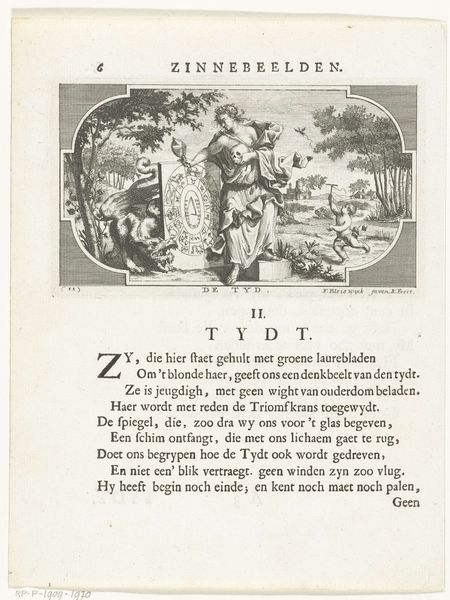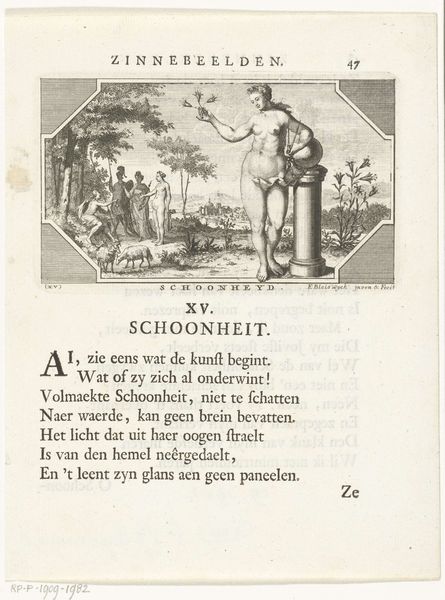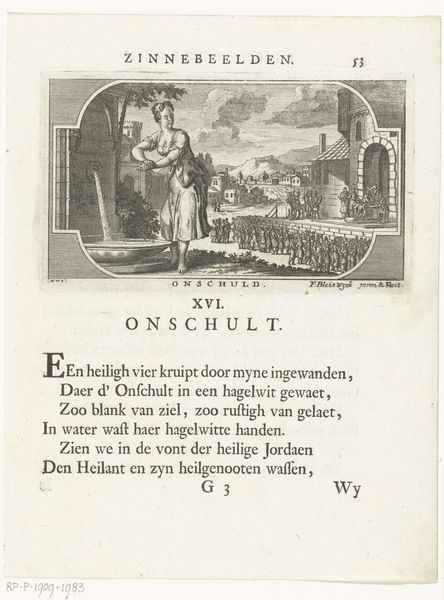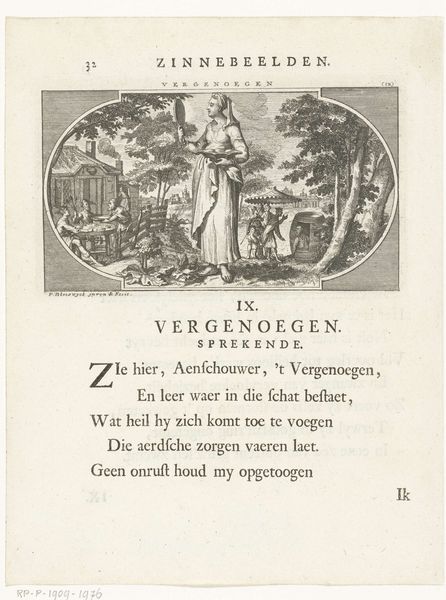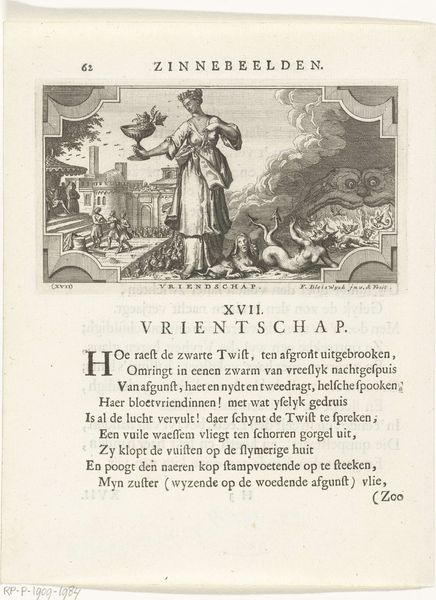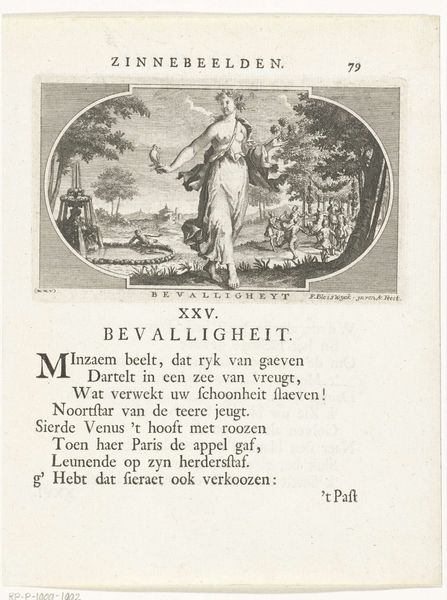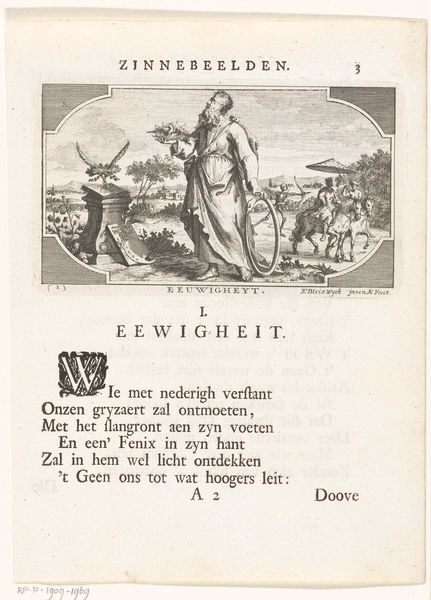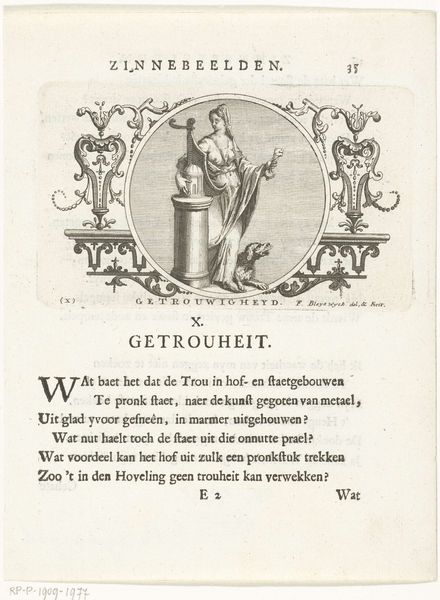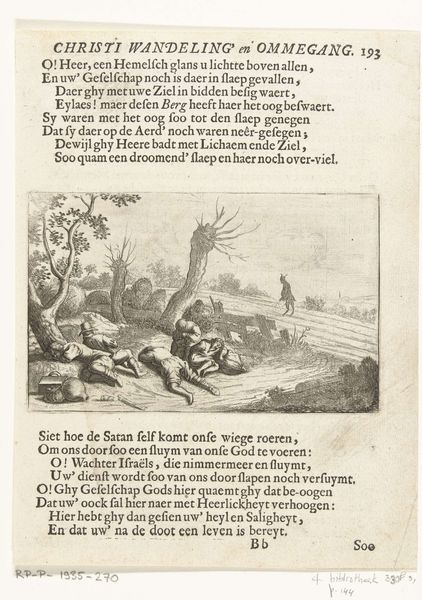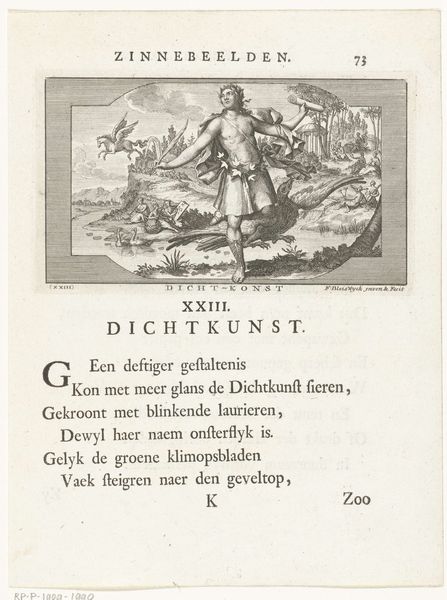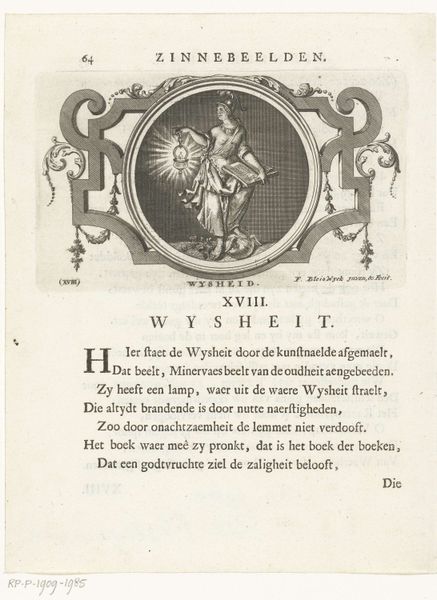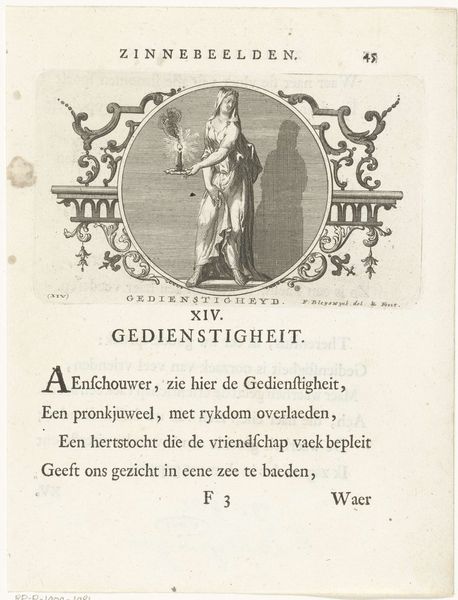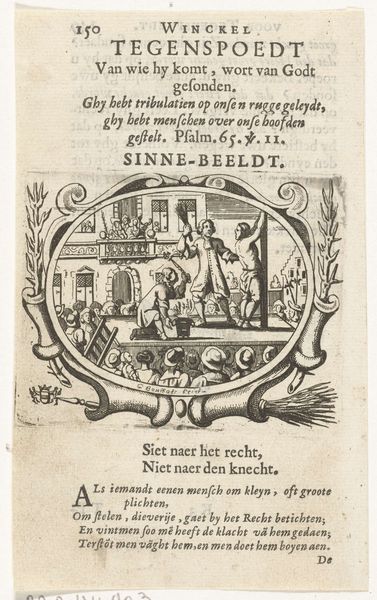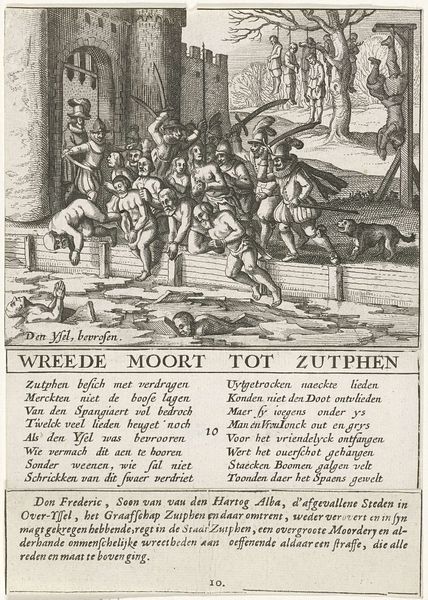
print, engraving
#
allegory
#
baroque
# print
#
old engraving style
#
figuration
#
line
#
engraving
Dimensions: height 191 mm, width 152 mm, height 79 mm, width 129 mm
Copyright: Rijks Museum: Open Domain
François van Bleyswijck created this print, titled "Emblem with allegory on perfection," in the Netherlands, sometime around the turn of the 18th century. The image offers a window into the cultural values of the Dutch Golden Age, a period of immense economic and artistic flourishing. The central figure, a classically inspired nude, embodies perfection. She stands amidst symbols of both rural life and intellectual pursuit, reflecting a society that valued both practical industry and the arts. But notice how "perfection" is presented here. It is "unattainable to mortals" a space for "the imperfect man." Bleyswijck’s print can be seen as a subtle commentary on the social structures of his time. The Dutch Republic, though prosperous, was far from perfect, marked by inequalities and social hierarchies. By studying sources like period literature, economic records, and the archives of artistic guilds, we can better understand the social conditions that shaped artistic production in this period. The meaning of art is always contingent on its context.
Comments
No comments
Be the first to comment and join the conversation on the ultimate creative platform.
